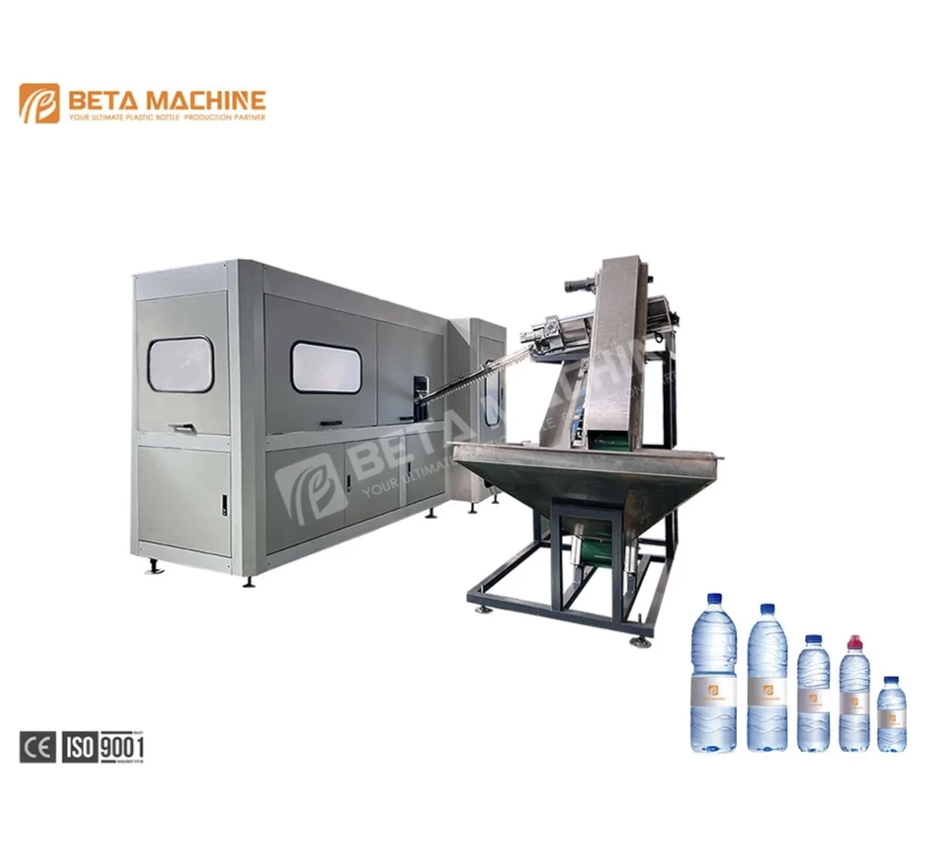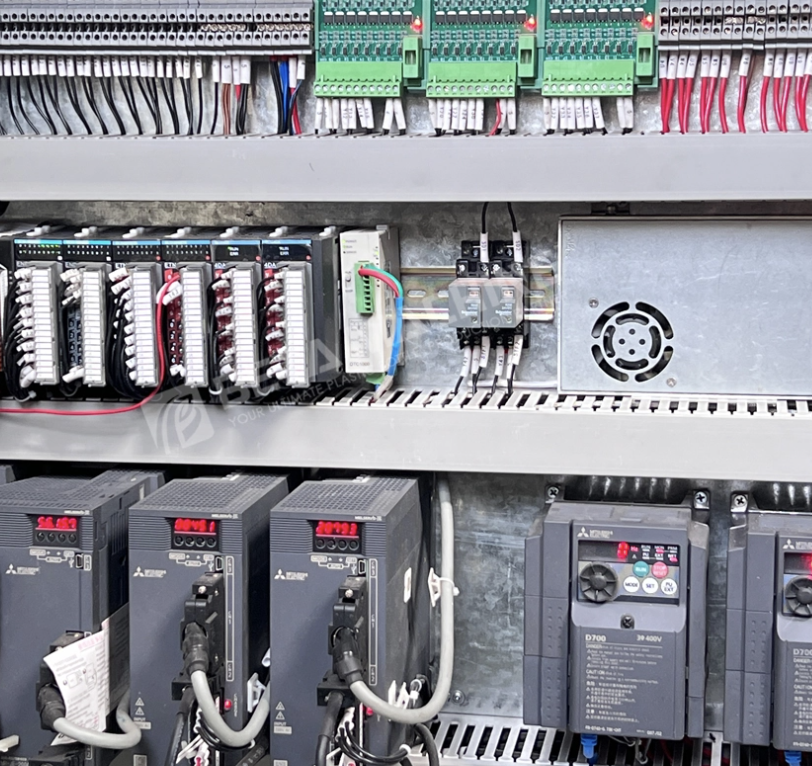Language
Views: 0 Author: Site Editor Publish Time: 2025-09-16 Origin: Site
Plastic bottles are everywhere — from water and soda to cosmetics and medicine. Behind these everyday items is an advanced manufacturing process known as stretch blow molding (SBM). The machines that power this process have transformed the packaging industry by making bottles lighter, stronger, and more sustainable.
In this guide, we’ll explain what a stretch blow molding machine is, how it works, the types of machines available, their advantages, materials used, and how to choose the right system for your business.
A stretch blow molding machine is a specialized piece of equipment that produces hollow plastic containers like bottles and jars. It takes a small plastic piece called a preform and reshapes it into a finished bottle through stretching and blowing.
These machines are essential in industries like food, beverage, cosmetics, and pharmaceuticals. Without them, we wouldn’t have the transparent PET water bottles or the neatly shaped shampoo containers we use daily.
Key Characteristics:
Creates lightweight, durable bottles
Works mainly with PET plastic
Produces containers in different sizes and shapes
Combines precision with high-speed production

Although the process sounds complex, it follows a clear sequence. Here’s how a bottle is made:
Preform Creation – PET resin is melted and injected into a mold. This mold forms a short tube called a preform. It already has the bottle’s neck and thread design.
Heating – The preform is heated in a controlled way. Too hot or too cold, and the bottle will be weak or deformed.
Stretching – A rod pushes the preform downward, stretching it lengthwise.
Blowing – Compressed air expands the heated preform against the walls of the mold. This step shapes the bottle into its final form.
Cooling and Ejection – The mold cools quickly. Once the plastic hardens, the mold opens, and the bottle is ejected.
Not all SBM machines are the same. The choice depends on production needs, product design, and cost considerations.
Preforms and bottles are made on the same machine.
Best for small to medium runs.
Used in cosmetics, pharmaceuticals, or specialty packaging.
Preforms are made first, often in large batches.
Preforms are reheated later and blown into bottles.
Perfect for large-scale production, especially in beverage packaging.
Comparison Table:
| Machine Type | Best Use Case | Advantages | Limitations |
|---|---|---|---|
| Single-Stage | Low to medium volume | Compact setup, simplified process | Slower for big runs |
| Two-Stage | High volume | High speed, scalable production | Requires preform stock |
The choice of resin impacts bottle clarity, durability, and cost.
PET (Polyethylene Terephthalate) – Clear, lightweight, recyclable. Most common in beverage bottles.
PP (Polypropylene) – Heat-resistant, used in hot-fill bottles for sauces or teas.
HDPE (High-Density Polyethylene) – Strong, resistant to UV and moisture. Often used outdoors.
PVC (Polyvinyl Chloride) – Flexible, great for squeeze bottles.
PS (Polystyrene) – Clear but brittle. Popular in disposable cups.
PC (Polycarbonate) – Impact-resistant, used for sports bottles or safety products.
Quick Reference Chart:
| Resin | Properties | Common Use |
|---|---|---|
| PET | Clear, recyclable, strong | Water & soda bottles |
| PP | High heat resistance | Hot-fill bottles |
| HDPE | Durable, UV-resistant | Detergent containers |
| PVC | Flexible | Squeeze bottles |
| PS | Clear, brittle | Disposable cups |
| PC | Tough, high-impact | Sports bottles |
One major benefit is durability without added weight. Bottles remain light for consumers to carry, yet strong enough to resist cracking or breaking during use and transport.
Stretch blow molding machines allow companies to create containers in many shapes and sizes. This versatility helps products stand out visually while meeting functional needs.
These machines operate quickly, making them perfect for mass-market goods. Faster cycle times mean manufacturers can produce more bottles in less time while cutting costs.
The smooth surfaces produced by SBM machines improve labeling and graphics. Clearer prints and sleek finishes make packaging look more attractive on store shelves.
Bottles produced with this method hold carbonation and flavor well. They also help maintain freshness, which is crucial for beverages and sensitive products.
Using less material and running on shorter cycles reduces expenses. Manufacturers can achieve better profit margins while still producing high-quality packaging.
Most SBM bottles can be recycled. This supports circular economy initiatives and helps companies meet eco-friendly standards demanded by consumers today.

Other molding methods exist, but SBM stands out.
Extrusion Blow Molding (EBM): Good for large containers like jerry cans, but less precise.
Injection Blow Molding (IBM): Best for small, accurate bottles, often used in pharma.
Accumulator Head Machines: Handle thick-walled or oversized industrial parts.
Comparison Table:
| Process | Best For | Strengths | Weaknesses |
|---|---|---|---|
| SBM | Bottles, beverages | Strong, clear, recyclable | Higher upfront cost |
| EBM | Large containers | Handles big hollow parts | Less precision |
| IBM | Small pharma bottles | Accurate neck & finish | Limited size flexibility |
Stretch blow molding machines are widely used for everyday drinks. They produce bottles for water, soda, juices, and even milk. These bottles need to be lightweight, safe, and durable, which SBM technology delivers consistently.
The cosmetics industry values packaging that looks attractive and protects its contents. Shampoo, lotion, and cream containers are often made with SBM machines because they allow flexible shapes and high-quality finishes that appeal to consumers.
Medicine bottles and vitamin containers require strict quality and safety standards. SBM machines help manufacturers create containers that are both precise in shape and safe for sensitive pharmaceutical products.
Cleaning liquids and detergents rely on strong, durable packaging. Stretch blow molding ensures bottles can resist leaks and withstand regular handling, making them ideal for household and chemical use.
From oils to automotive fluids, industrial products demand containers that can handle harsh conditions. SBM machines produce packaging that is tough, reliable, and suitable for industrial environments.
Large production runs need high-speed machines that can operate continuously, while specialty items may require smaller, more compact units.
Not every machine can handle oversized or highly customized bottles. Buyers should confirm the equipment matches their specific product dimensions.
Different resins behave differently during molding. It’s important to match the chosen material, such as PET or PP, with the machine’s design to ensure smooth operation.
Semi-automatic machines suit smaller facilities, while fully automated systems are better for high-volume production. The choice depends on labor availability and output needs.
Machines that use less power and heat faster can lower operating costs significantly over time. Energy-saving models are often worth the initial investment.
Reliable after-sales service, spare parts, and technical assistance are critical. Working with reputable suppliers helps ensure machines run smoothly for years.
Pro Tip: Request sample production runs before purchasing to see real-world performance.
More machines are being designed to handle recycled plastics. This shift helps manufacturers reduce waste and meet sustainability goals.
Alternatives to petroleum-based resins are gaining traction. SBM machines will increasingly adapt to bio-based materials for eco-friendly packaging.
Artificial intelligence and smart controls allow machines to self-adjust, reduce errors, and improve efficiency. These features are becoming standard in modern facilities.
Manufacturers are finding ways to use less plastic without sacrificing bottle strength. This trend saves material costs and lowers environmental impact.
Future machines will consume less power, heat faster, and operate more efficiently. This helps companies cut expenses while reducing their carbon footprint.
It’s used to make plastic bottles and containers for beverages, cosmetics, and more.
SBM stretches the preform for added strength. IBM focuses on precision and small bottles.
Yes, many machines work with rPET to support recycling goals.
Food, beverages, cosmetics, pharmaceuticals, and household goods.
With proper maintenance, many machines run for 10–15 years or more.
Stretch blow molding machines are at the heart of modern packaging. They create strong, lightweight, and versatile bottles that serve industries worldwide. From soft drinks to shampoos, their applications are endless.
If your business needs reliable plastic packaging solutions, investing in the right SBM machine can improve efficiency, cut costs, and enhance product quality. BETA specializes in advanced stretch blow molding equipment designed to meet the demands of food, beverage, cosmetics, and industrial packaging. With a focus on innovation, durability, and customer support, BETA provides tailored solutions that help manufacturers stay competitive while embracing sustainable production.